We are excited to announce a special collaboration between the Special Collections Research Center, the William L. Clements Library, and the students of ALA 264 Much Depends on Dinner. From April 17 to May 8th, you will be able to find culinary history across campus on Diag Boards and Campus Bus Signs. To see all five selected items from these two libraries together with the students' exhibit labels, scroll through this blog post or visit the Shapiro Screens (April 16-May 7) on the first floor of the Shapiro Library.
Special thanks to the students of ALA 264 and Margot Finn, Lecturer in the College of Literature, Science, and the Arts, and to Maggie Vanderford, Librarian for Instruction and Engagement at the William L. Clements Library, for bringing this project to fruition!
Dr. Chase's Recipes
By John Courcy, Lauren Rookard, Riordan Krause, and Irem Hatipoglu
Until he settled in Ann Arbor, Dr. A.W. Chase (1817-1885) was a peddler of foodstuffs and medicine in Ohio and Michigan as he traveled around with the circus. By publishing his book, Dr. Chase's Recipes or Information for Everybody, he provided over eight hundred practical recipes that are applicable to a broad audience. Chase included instructions to create substances commonly used by veterinarians, farriers, blacksmiths, tanners, and more. Prior to modern consumer culture, people needed to know how to make all manner of things themselves — this book shows how the meaning of the term "recipe" has shifted almost unilaterally to the kitchen.
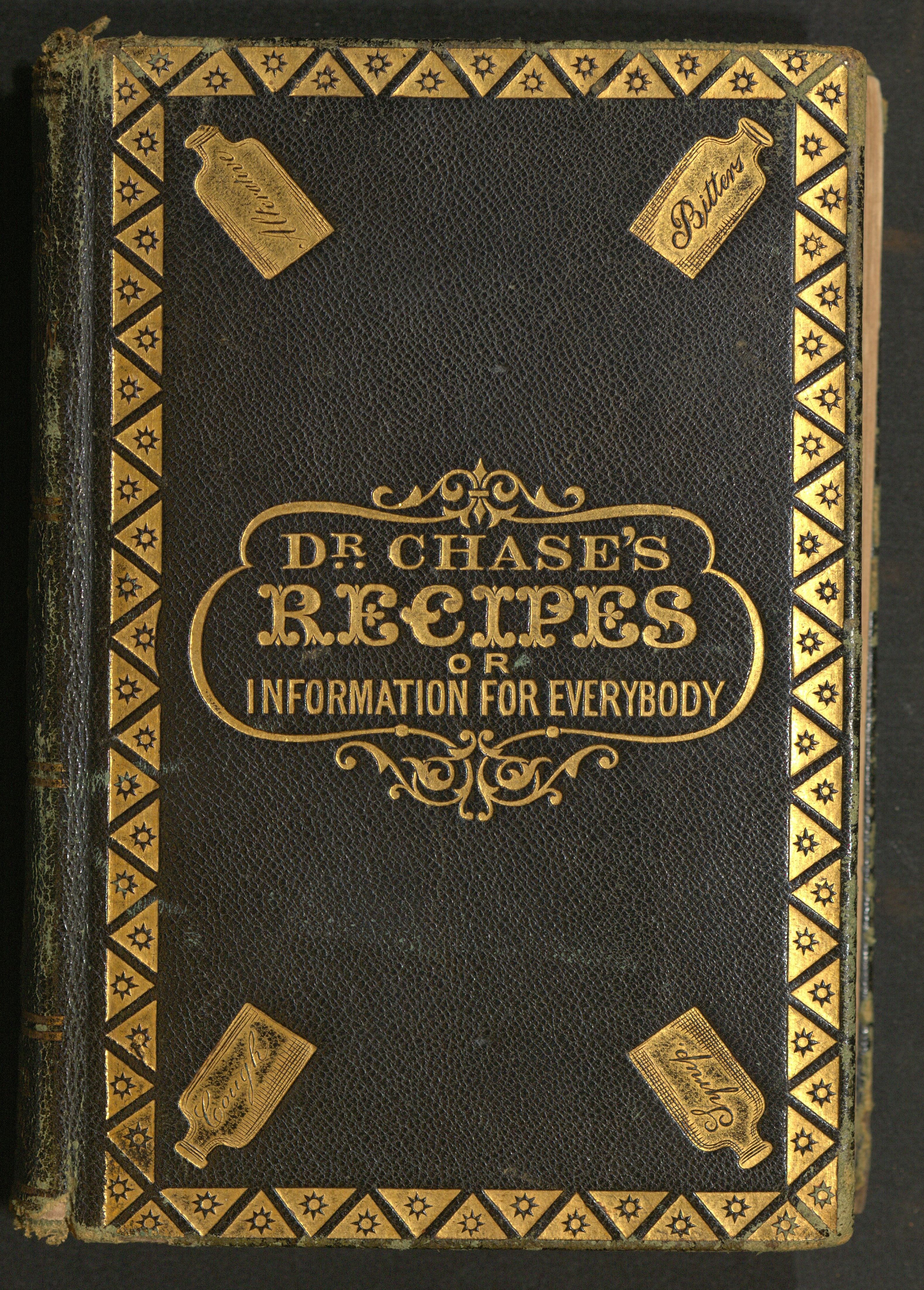
Dr. Chase's Recipes or Information for Everybody. A.W. Chase, Ann Arbor, Michigan: Published by the Author, 1867. In the University of Michigan Library, Special Collections Research Center (Janice Bluestein Longone Culinary Archive). Gift of Janice Bluestein Longone.
Porcineograph
By Nicholas Jasion, Siena Weisbrodt, Jessy Wu, and Shreya Vuriti
The "Porcineograph," commissioned by William Baker in 1876, shows a map of the United States in the form of a pig. Baker produced the map, which highlights each state's regional pork dish, as a souvenir after the launch of his "Sanitary Piggery" which was a revolutionary step toward safer standards in handling pork. The piggery embodied Baker's public health ideals, which were rooted in the Pure Food Movement as it featured ultra-clean housing and controlled diets. His advocacy of this movement supported the enactment of the Pure Food and Drug Act of 1906 to improve public health in the U.S. The "Porcineograph" souvenir was so popular that Baker produced two variant editions the following year, of which the Clements copy is one.
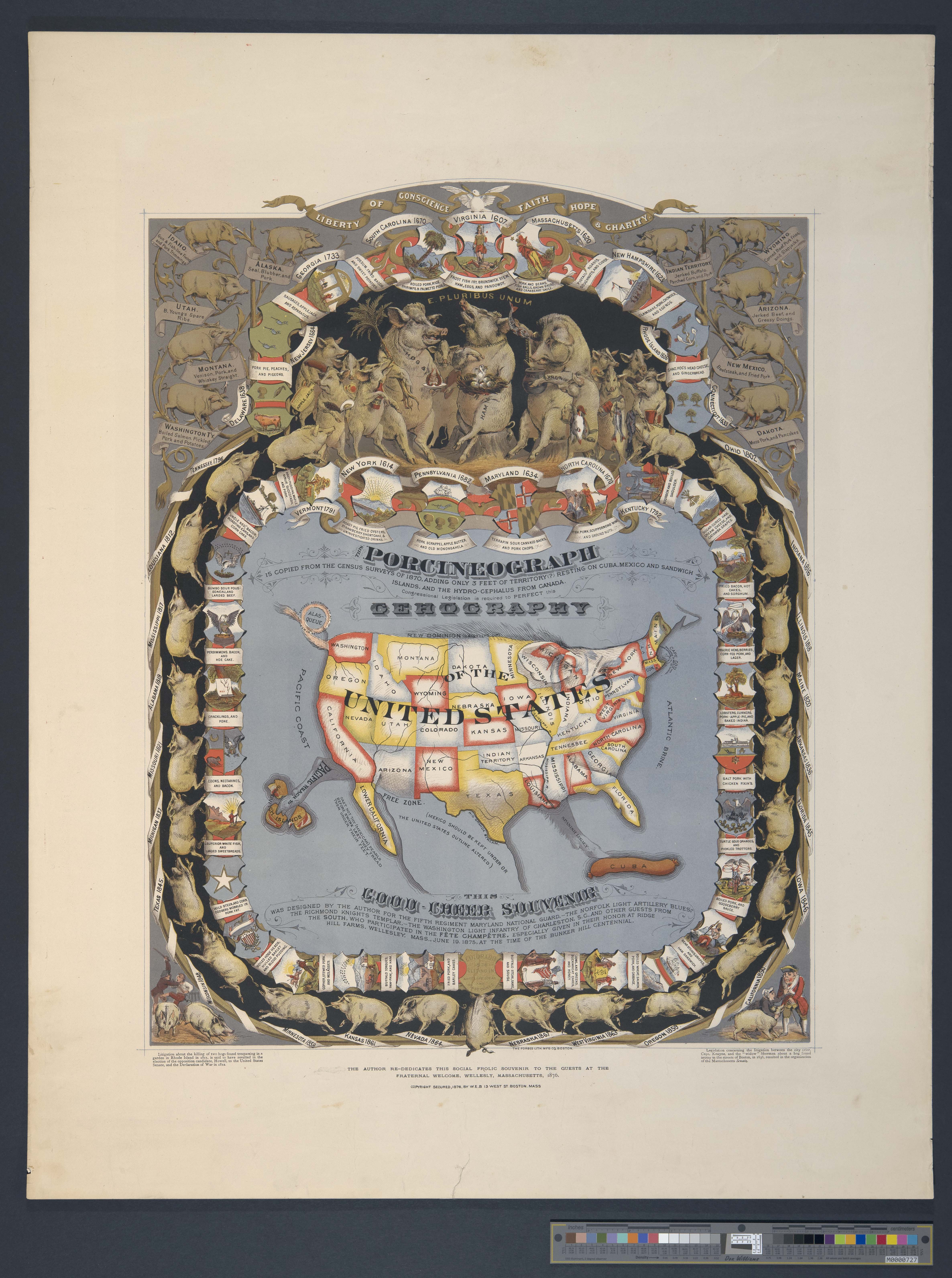
"Porcineograph." William Emerson Baker, Boston: The Forbes Lith. Mfg. Co., 1876. In the William L. Clements Library.
The Nobleboro Community Kitchen (Mary and Alice Puffer Papers)
By Michael Lin, Alexa Poplawski, Sophia Ernst
Nobleboro Community Kitchen was a roadside restaurant in Nobleboro, Maine, in the 1920s, created by the three Puffer sisters. They enjoyed cooking traditional foods passed down by their grandmother. The Puffers were helped by neighbors, who gave them food and raw materials, including milk, chickens, and vegetables. The Community Kitchen was so successful they served a hundred dinners between 12pm-2pm on Sundays. Lobsters are prominently featured in their menus (i.e. "We boil our own lobsters and Maine deep-sea lobsters have a flavor all their own"). In time, the sisters had to close their restaurant due to industrialization, wars, and highway construction.
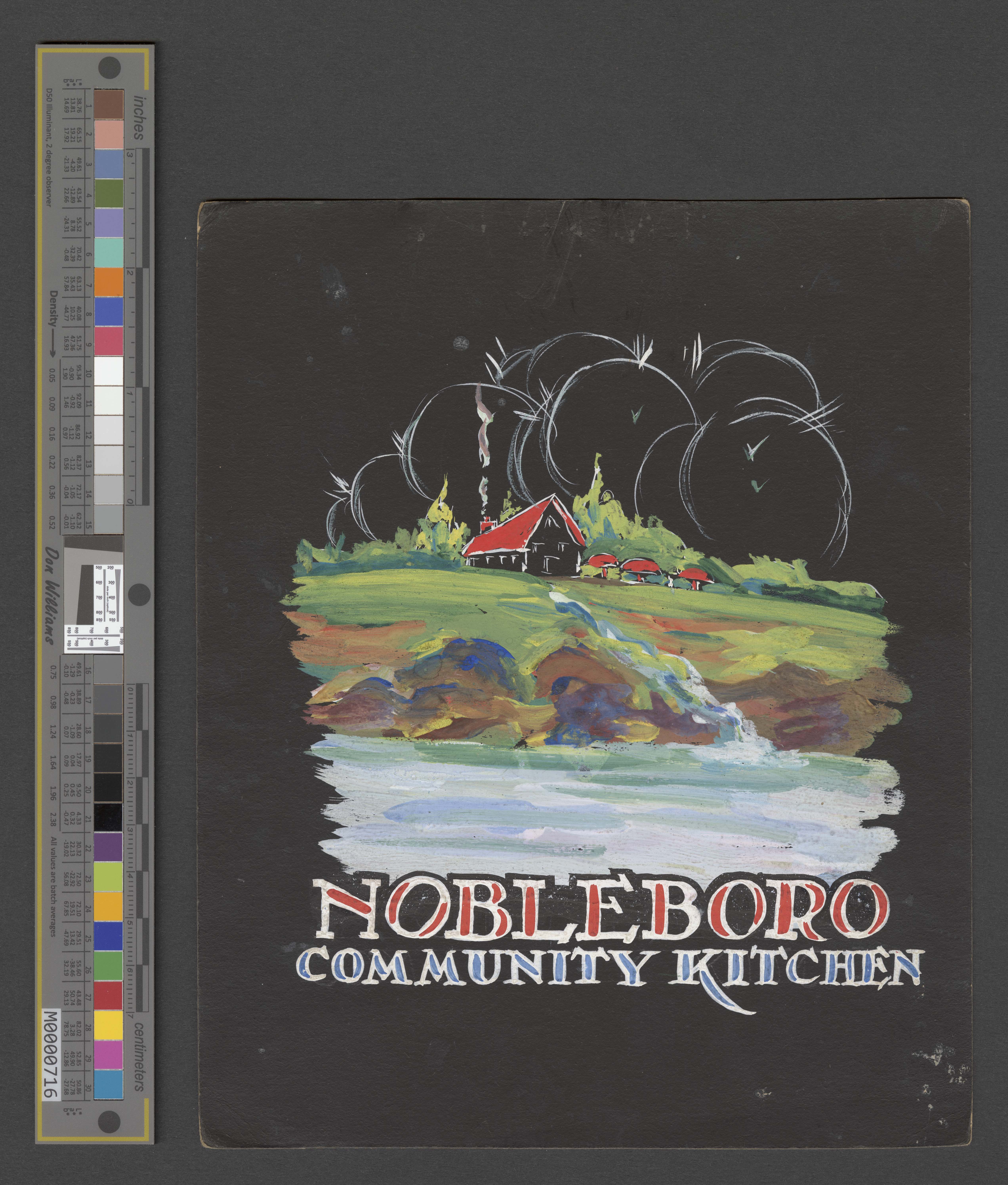
Front Cover for the Nobleboro Community Kitchen in Nobleboro, Maine. Mary and Alice Puffer Papers (1830-1940). In the William L. Clements Library.
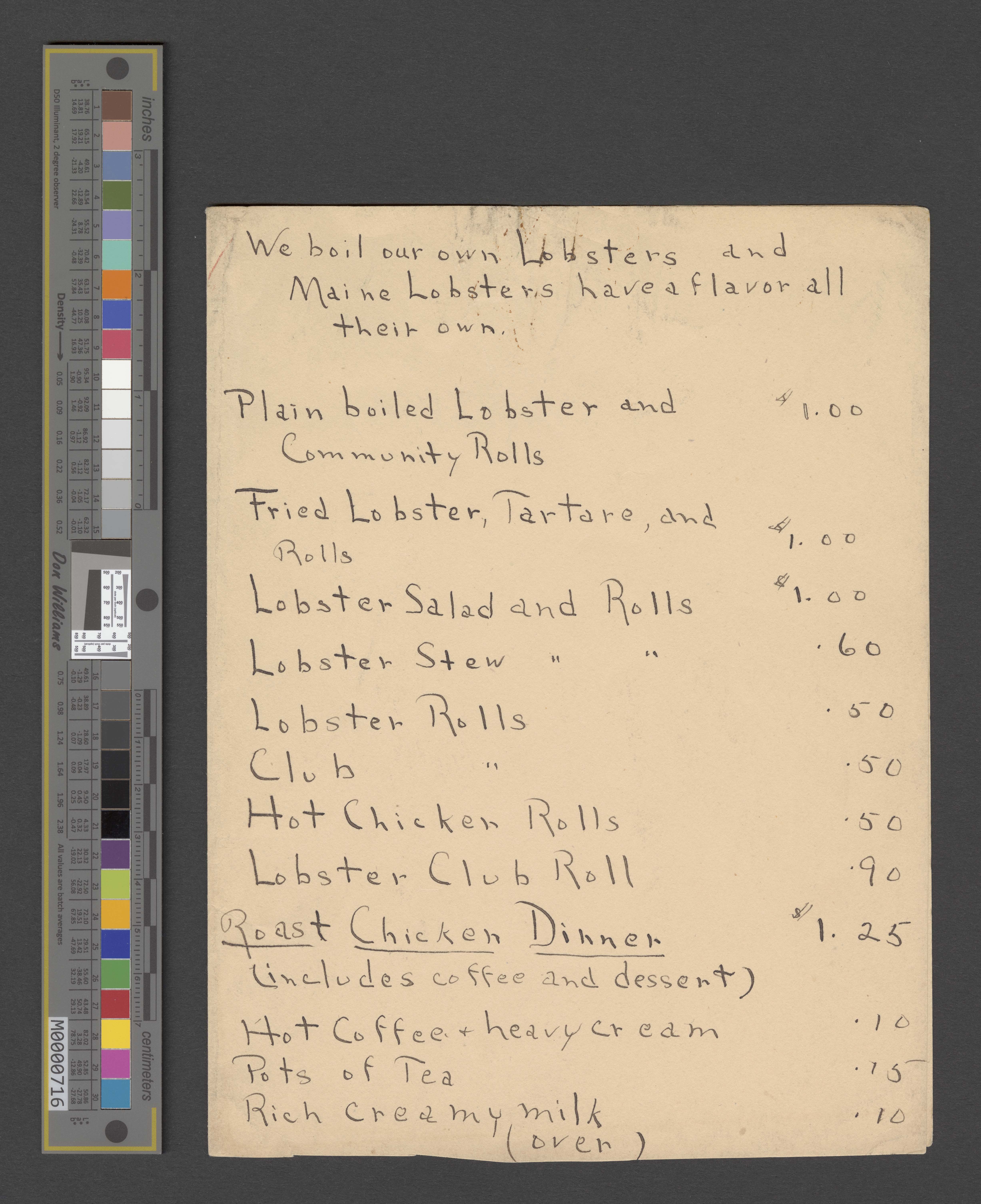
Menu for the Nobleboro Community Kitchen in Nobleboro, Maine. Mary and Alice Puffer Papers (1830-1940). In the William L. Clements Library.
A Date With a Dish
By Celia Kent, Reem Killawi, and Vivian Ho
A Date with a Dish: A Cook Book of American Negro Recipes. Freda DeKnight, New York: Hermitage Press, INC., 1948. In the University of Michigan Library, Special Collections Research Center (Janice Bluestein Longone Culinary Archive).
Freda De Knight was the first food editor for the Black magazine Ebony, after which all her recipes were compiled into a book. In this cookbook DeKnight changed the narrative of what Black food was by merging traditional ingredients and dishes with international flavors and methods. Her book represents the growing Black middle and upper class in cosmopolitan America as a result of the second Great Migration.
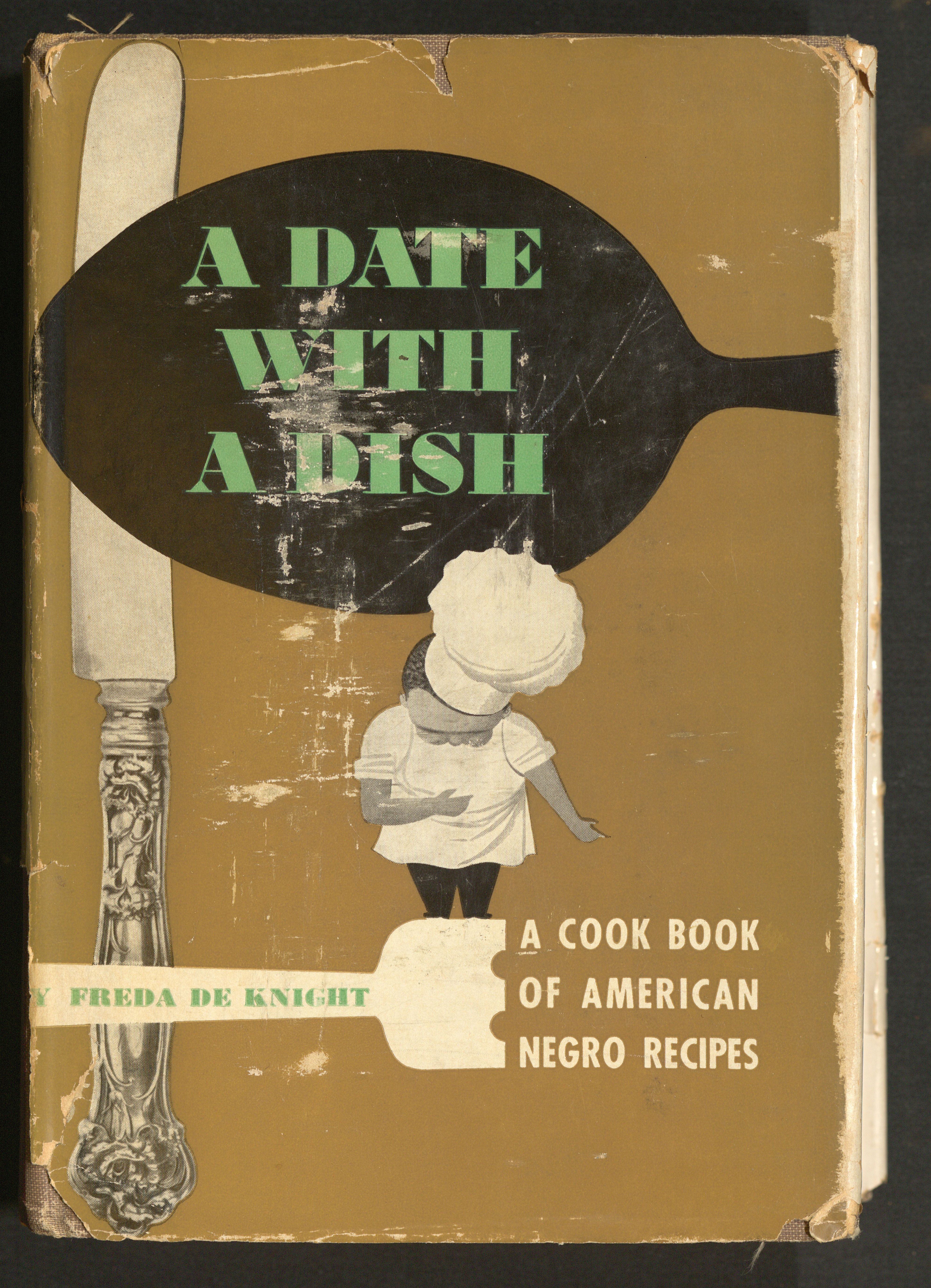
A Date with a Dish: A Cook Book of American Negro Recipes. Freda DeKnight, New York: Hermitage Press, INC., 1948. In the University of Michigan Library, Special Collections Research Center (Janice Bluestein Longone Culinary Archive). Gift of Janice Bluestein Longone.
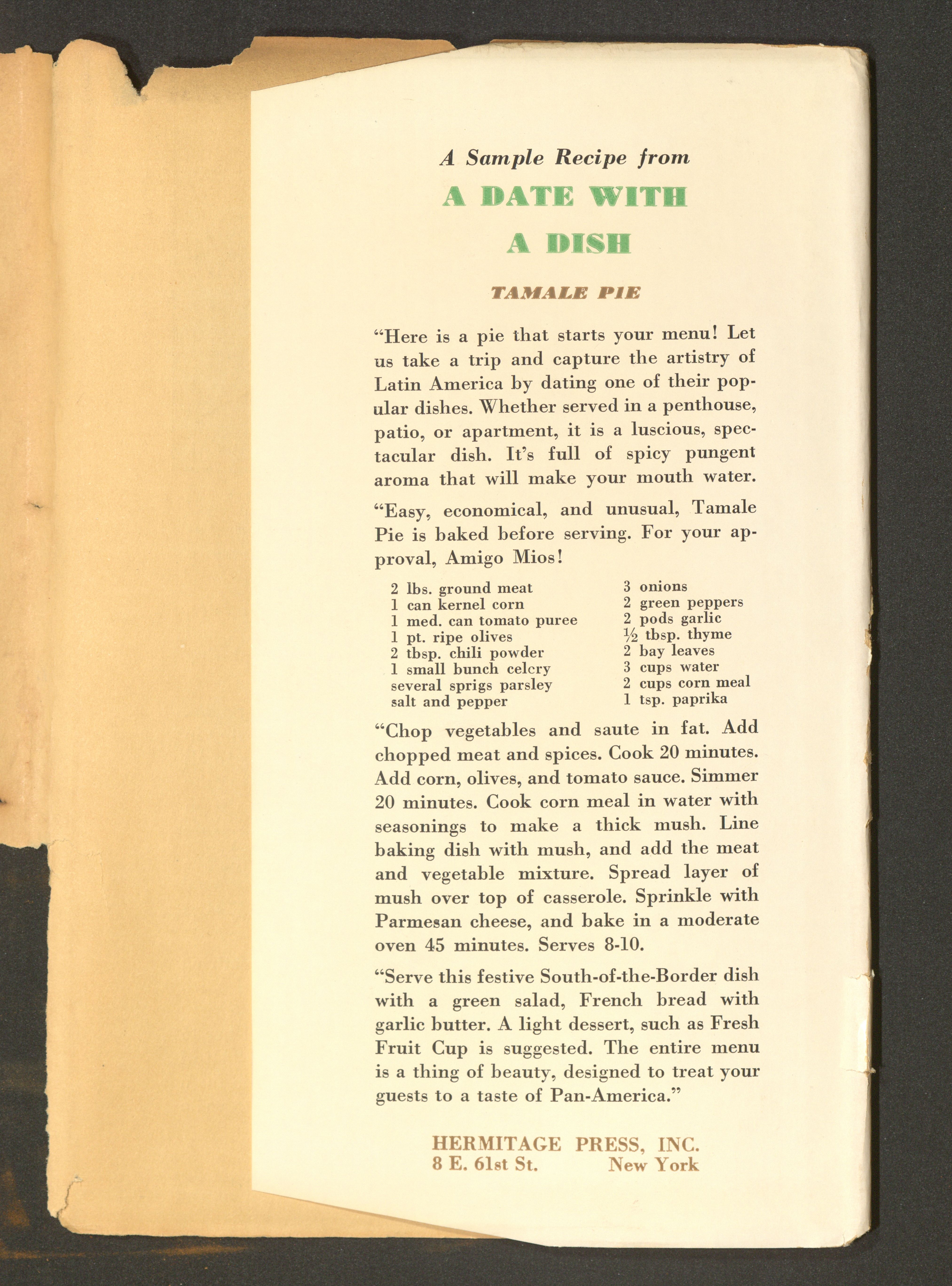
A Date with a Dish: A Cook Book of American Negro Recipes. Freda DeKnight, New York: Hermitage Press, INC., 1948. In the University of Michigan Library, Special Collections Research Center (Janice Bluestein Longone Culinary Archive). Gift of Janice Bluestein Longone.
Chez Panisse Menus (Culinary Menu: Tower Collection)
By Luke Herndon, Tori Sullivan, Kiara Lileikis, Yeju Kim
Below is the 1975 Chez Panisse New Year's Even Dinner Menu: the five-course meal went for $25 a person, or $140 in today's money. Chez Panisse's owner, Alice Waters, was an early restaurant owner to place emphasis on a locally sourced menu. Farm-to-table dining is still popular today, as demonstrated by Zingerman's Deli in Ann Arb or. The detail in the illustration on this menu indicates the restaurants ambitions towards Michelin Star levels of prestige, highlighting the typical dining experience at Chez Panisse. Scrolling down, you will also see another Chez Panisse menu from January 30-February 4, 1973.
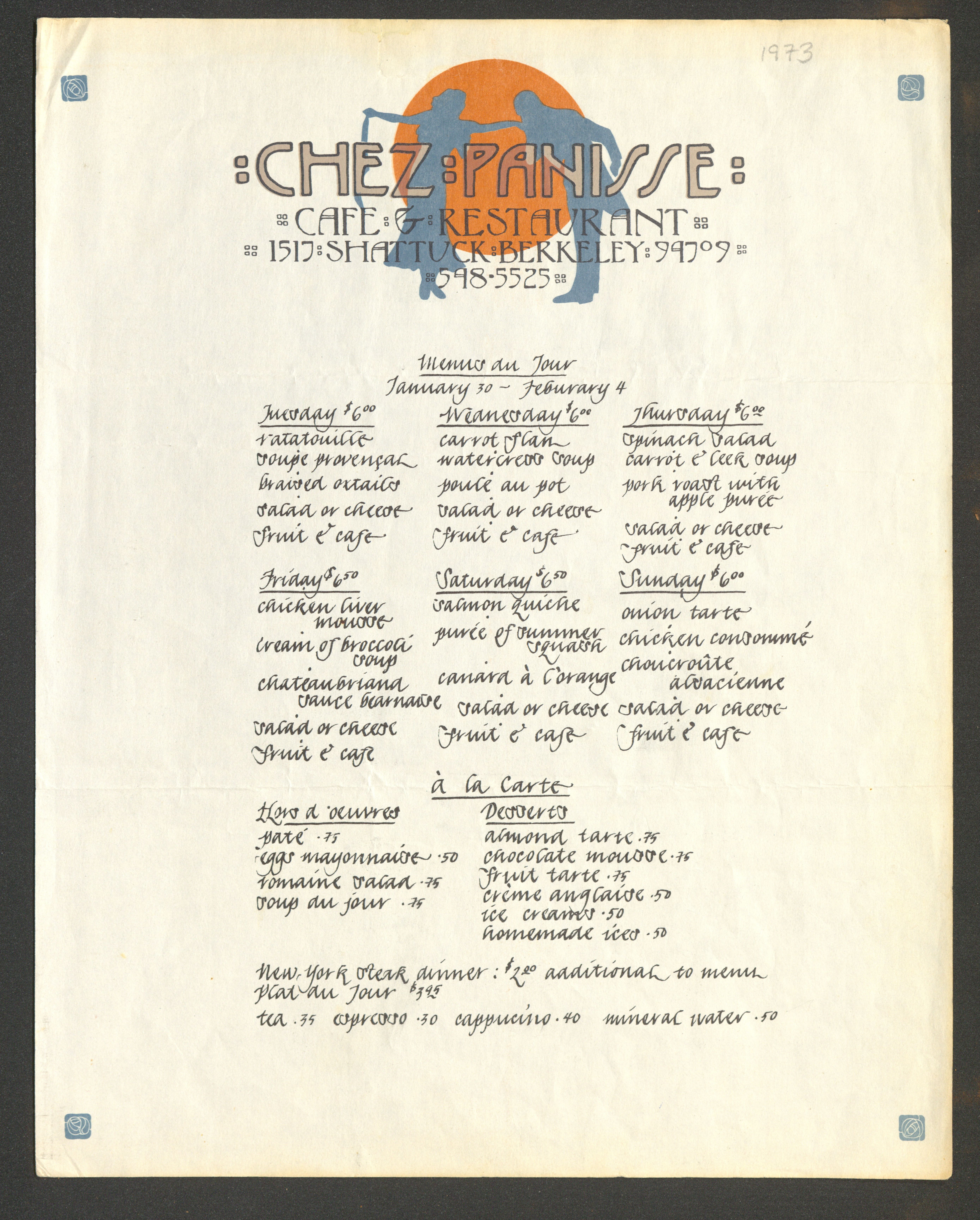
Culinary Menu: California, Tower Collection. In the University of Michigan Library, Special Collections Research Center (Janice Bluestein Longone Culinary Archive).

Culinary Menu: California, Tower Collection. In the University of Michigan Library, Special Collections Research Center (Janice Bluestein Longone Culinary Archive).